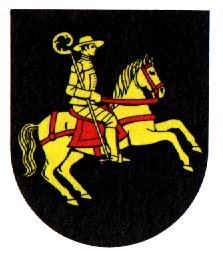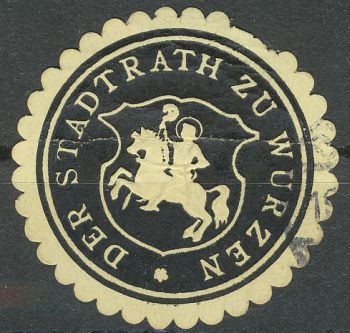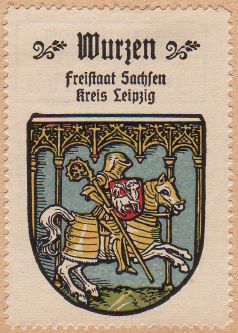Wurzen: Difference between revisions
Jump to navigation
Jump to search
Knorrepoes (talk | contribs) m (Text replace - "'''Origin/meaning :'''<br/>" to "====Origin/meaning====") |
Knorrepoes (talk | contribs) m (Text replace - "|width="15%"|50 px|right |}" to "|width="15%"|50 px|right |}<seo title="Wappen, Gemeindewappen" />") |
||
| Line 3: | Line 3: | ||
|width="70%" align="center" |'''Heraldry of the World<br/>Civic heraldry of [[Germany]] - [[Deutsche Wappen|Deutsche Wappen (Gemeindewappen/Kreiswappen)]]''' | |width="70%" align="center" |'''Heraldry of the World<br/>Civic heraldry of [[Germany]] - [[Deutsche Wappen|Deutsche Wappen (Gemeindewappen/Kreiswappen)]]''' | ||
|width="15%"|[[File:Germany.jpg|50 px|right]] | |width="15%"|[[File:Germany.jpg|50 px|right]] | ||
|} | |}<seo title="Wappen, Gemeindewappen" /> | ||
'''WURZEN''' | '''WURZEN''' | ||
Revision as of 18:53, 5 November 2012
| Heraldry of the World Civic heraldry of Germany - Deutsche Wappen (Gemeindewappen/Kreiswappen) |
WURZEN
State : Sachsen
District (Kreis) : Leipzig (until 2008 Muldentalkreis)
Additions : 2006 Kühren-Burkartshain (1994 Burkartshain, Kühren)
Origin/meaning
The arms originally date from the middle of the 15th century.
The original arms showed the local patron saint, St. Wenesclaus (Wenzel) on a horse, which is also seen on the seal from around 1900. Later the image gradually changed into a knight and finally to an undescribed mounted man holding a crosier.
| Seal from around 1900 |
The arms in the Kaffee Hag albums +/- 1925 |
Literature : Bensing et al., 1984; Kaffee Hag picture albums, 1920s



